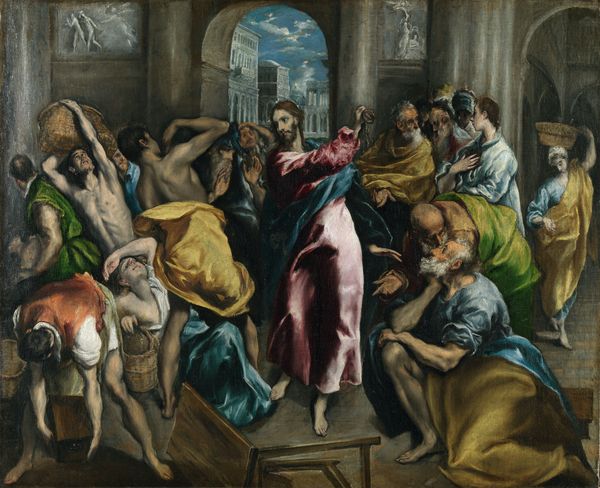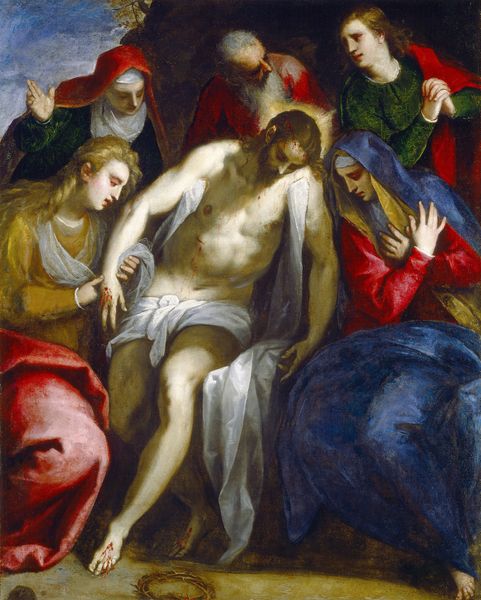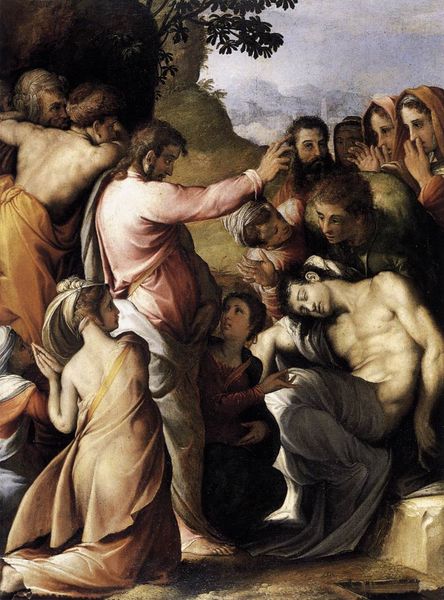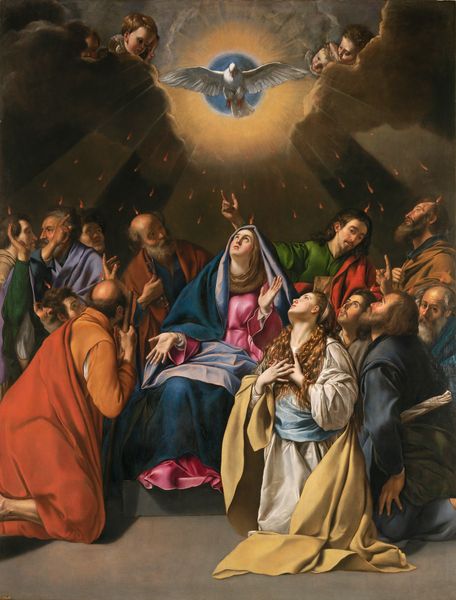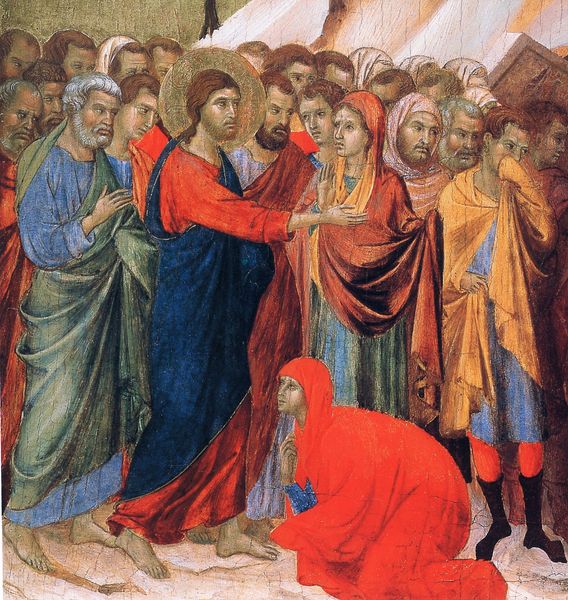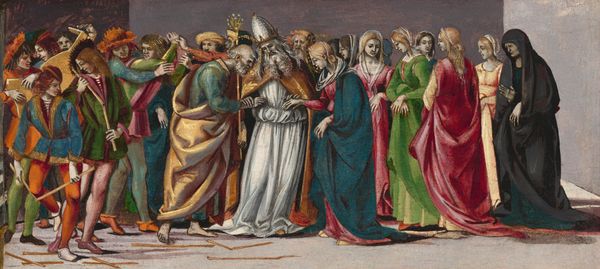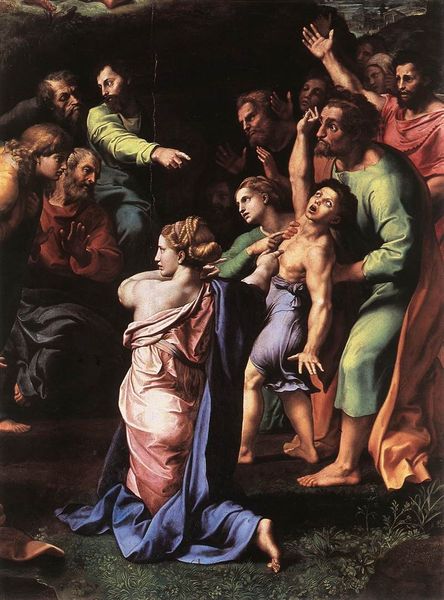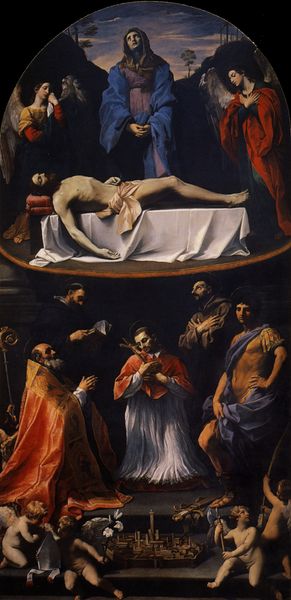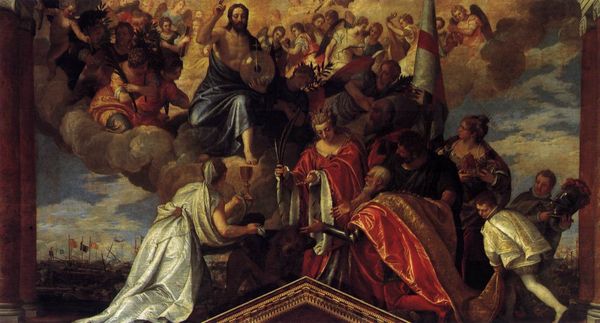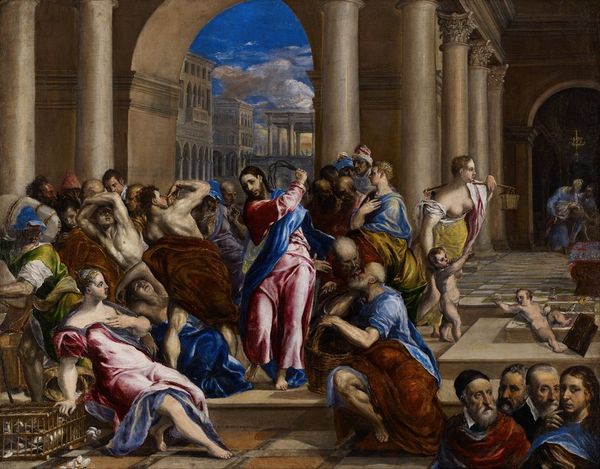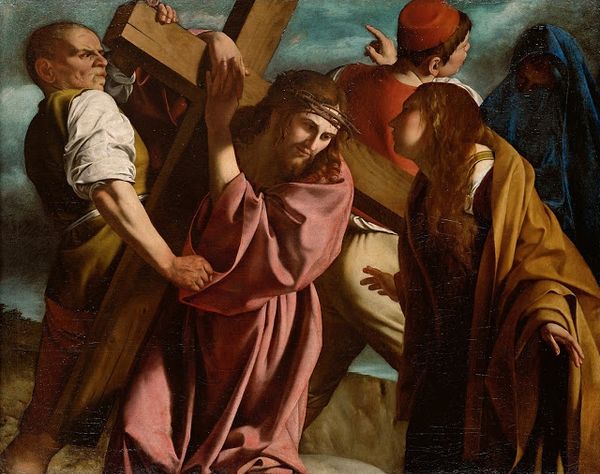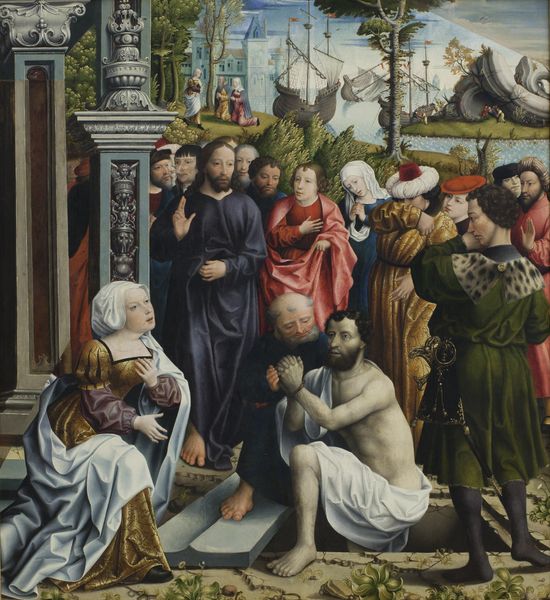
painting, oil-paint
#
portrait
#
narrative-art
#
painting
#
oil-paint
#
painted
#
figuration
#
11_renaissance
#
oil painting
#
jesus-christ
#
christianity
#
men
#
history-painting
#
italian-renaissance
#
portrait art
#
christ
Dimensions: 165 x 99 cm
Copyright: Public domain
Curator: Standing before us is El Greco’s “The Disrobing of Christ,” painted in 1579. It resides now, as it did then, in the Toledo Cathedral. Editor: The sheer density of bodies packed into this composition strikes me immediately. You feel the weight of the impending moment bearing down on the central figure. Curator: That density is deliberate, echoing the crowding, almost suffocating feeling described in accounts of the event. And note the masterful use of color, especially that vibrant red tunic Christ wears. In iconography, red symbolizes passion, love, but also martyrdom. Editor: It’s an almost offensively rich hue amidst the earth tones. The redness draws your eye, but it's also at odds with the evident coarseness and labor in the scene; the rough fabric and visible brushstrokes emphasizing a tactile reality. Look at the bottom corner, the workers and rough-hewn wood preparing for the crucifixion. Curator: Exactly. It serves as a counterpoint to Christ's divine, serene acceptance, evoking centuries of Christian art showing similar moments. The figures around Christ, though, seem torn. Their faces mirror the conflict. Even the armor gleams with nervous anticipation, an odd contrast between protection and vulnerability. Editor: I agree, and considering the historical context, Spain's intense religious fervor during that period, it makes me think of the guilds commissioned the painting. They weren’t just purchasing an artwork; they were visibly participating in and solidifying a communal devotion—using the products of skilled labor for a powerful declaration of faith. What kind of labor disputes erupted over this commission in 1577 I've read of really interests me here, I suspect these things influence meaning whether we admit or realize. Curator: It is an intricate layering of cultural beliefs and anxieties; that makes this artwork powerful, where individual expressions and beliefs merge to convey one of the central tenets of faith. Editor: Yes, reflecting the societal tapestry from which this painting originates, showcasing how devotion can be actively built through the convergence of work, materiality, and conviction. It makes one rethink not only painting itself, but belief itself as the sum of its parts.
Comments
No comments
Be the first to comment and join the conversation on the ultimate creative platform.
